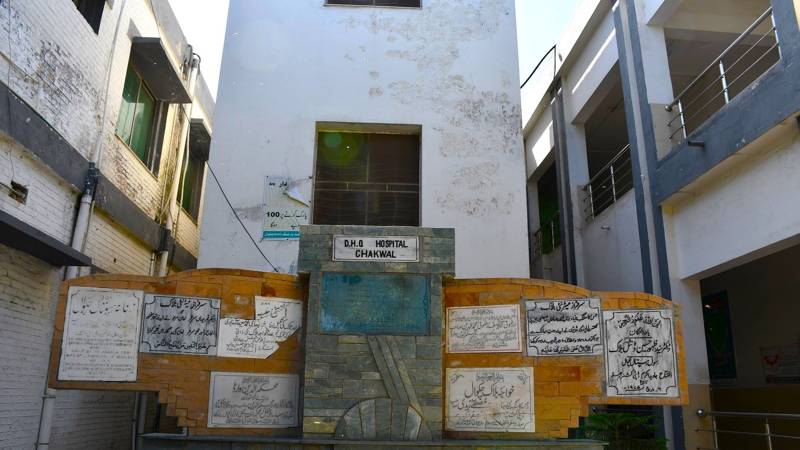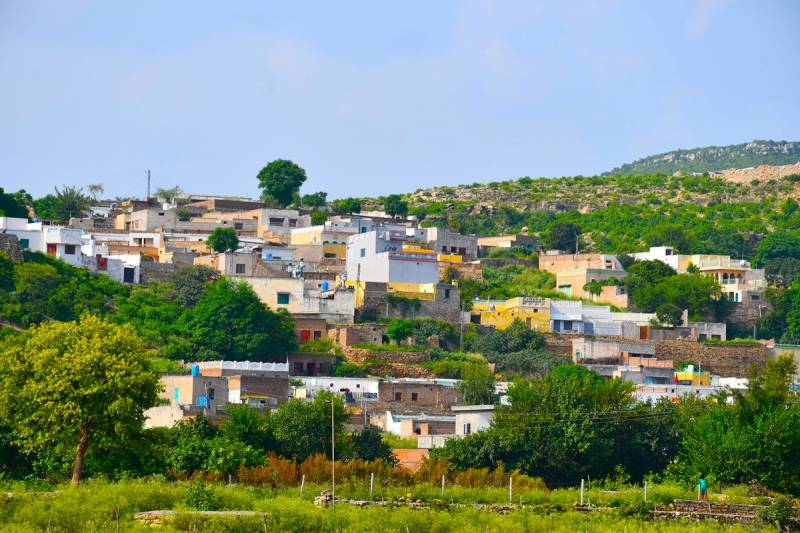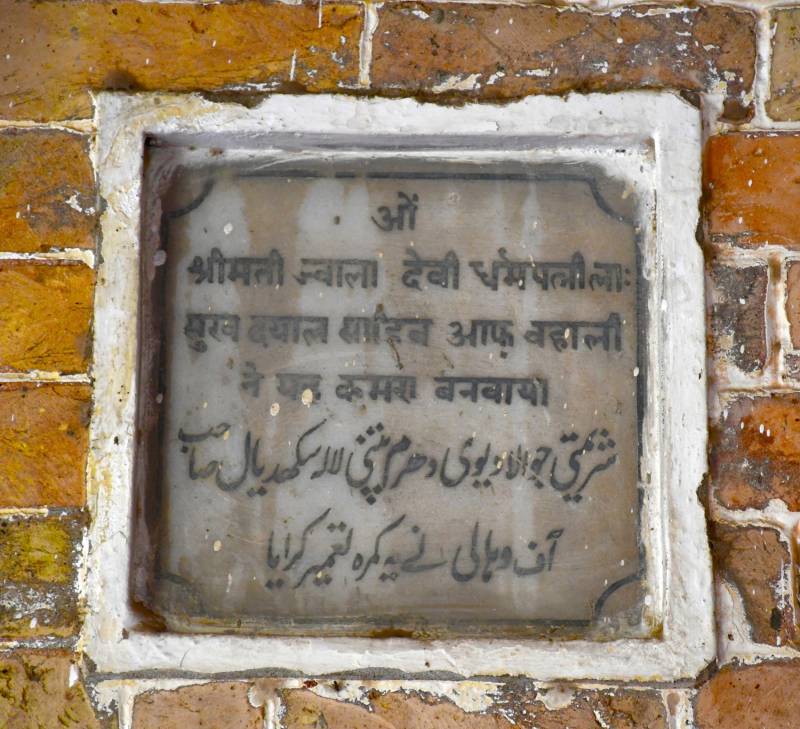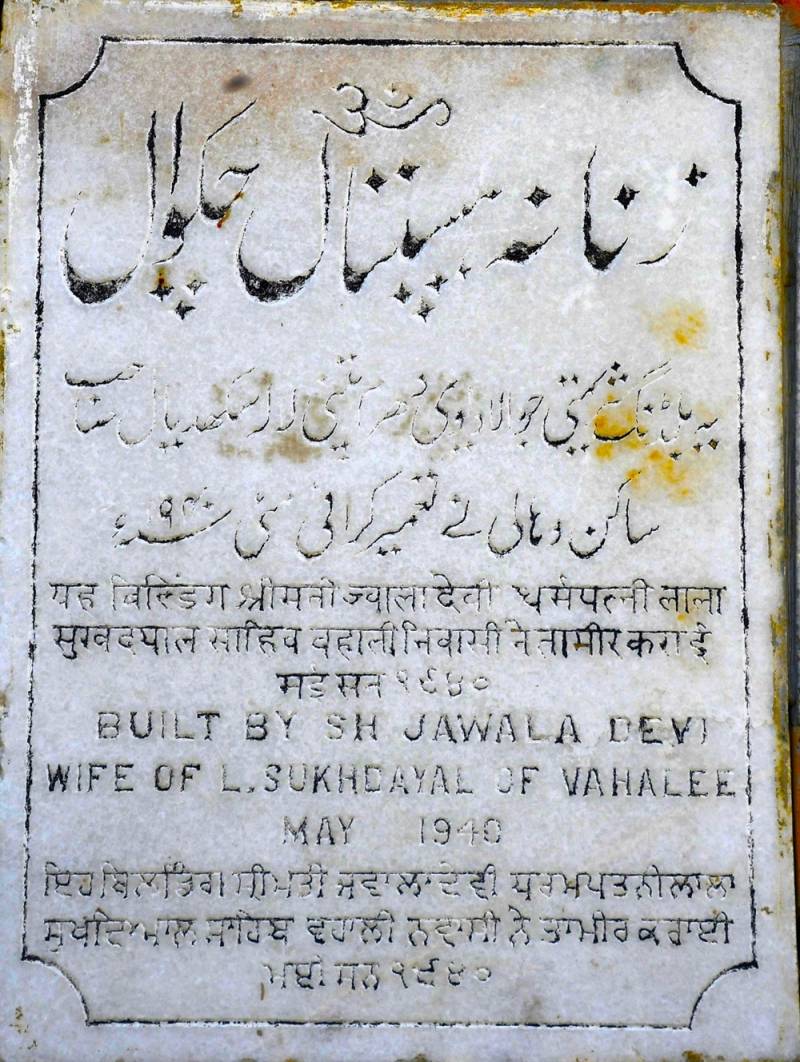
Chakwal is famous for women who played a significant role in welfare works, literature, architecture and mysticism. During my over two decades of fieldwork in the district, I came across a few monuments that have preserved the names of the women as builders of structures, major financiers of schools and hospitals and custodians of shrines. Not only Muslim but Hindu and Sikh women of Chakwal were known for their devotion and donations to the public life. The mysticism and philanthropy of these Muslim women were well-known, they were celebrated for their mysticism and their shrines were places of veneration for the local community in the respective villages and towns.
Some of the popular female shrines include the shrines of Bibi Lal near Takiya Shah Murad on the right bank of Bhanhao Nala, Khan Bibi at Chaukhandi Sharif, Burhan Bibi at Dulhah village, Bibi Syedi Sahiba at Dulmial, Hozan Bi at Chhonbi village, Doli Mai at Neela village, Alam Khatoon Bibi in Lawa, Mai Mastoran Bi at Narang Syedan village, Mai Murshid Bi at Saral, Maiyan Pakaan at Amirpur Mangan village, Bibi Daulat Khatoon at Pera Fatiyal village and Mai Moazzma Shaheed. These sites in their respective towns and villages play an important role in the socio-religious lives of the local community.

Apart from Muslim female mystics and philanthropists, a number of Sikh and Hindu women were also known for their welfare work in Chakwal. One such woman was Shrimati Jawala Devi of Vahali Zer village. Vahali village is located about 8 km from Choa Saidan Shah town in the Chakwal district. Vahali village was once home to powerful and influential Sikh Sardars and Hindu merchants. I will write about the monuments of Vahali including the mosque, temple, and Maaris (mansions) of Vahali in another article.
Shrimati Jawala Devi was the wife of Lala Sukhdayal. She was noted for philanthropic work not only in her village Vahali but also in other villages of Chakwal that were formerly part of the Jheulm district. During my interviews with local scholars and historians, and several field visits to Chakwal district, I came to know that she was credited to have dug a few wells, and financially contributed to hospitals and schools. I could not find any well that is believed to have been built by Shrimati Jawala Devi in Chakwal. However, her most unforgettable contribution was the construction of a separate hospital for women on the premises of the Civil Hospital Chakwal in 1940.

As per information on a memorial or monument which was built to memorialize builders of the Chakwal District Headquarters Hospital (DHQ), it contains donor plaques of all the people who financially contributed to the construction and expansion of the hospital and its brief historical background. This monument is located inside the Chakwal District Headquarters Hospital. It is written on a memorial or monument that Chakwal District Headquarters Hospital started initially as a dispensary in 1894. The same information is also attested by the Gazetteer of the Jhelum District 1904. The dispensary was upgraded to a Civil Hospital in 1928. Later when Chakwal became a tehsil, the hospital was upgraded to Tehsil Headquarters in 1981. In 1985 Chakwal got the status of district and it also acquired the status of District Headquarters Hospital. During the expansion and renovation of the hospital, all the donor plaques were fixed on a memorial which was built by the administration to preserve the names of financers and pay tribute to them. It is a commendable work by the administration of Chakwal District Headquarters Hospital.
The donor plaque of Shrimati Jawala Devi is also fixed on this memorial or monument. There is an Urdu inscription on the top of the donor plaque followed by English, Hindi, and Gurmukhi respectively. It reads that the building (ie the Women's Hospital) was built by Shrimati Jawala Devi wife of Lala Sukh Dayal of Vahali in May 1940.

One can also see a donor plaque of Begum Qamar Jahan (I will write about her contributions in a separate article) who built a maternity block in memory of her husband Raja Muhammad Sarfraz Khan. It is said that Raja Muhammad Aurangzeb Khan, the father of Raja Sarfraz Khan, had first allocated land and finances for the dispensary in 1894. Both Mair Minhas and Sehgal families financially contributed to the construction and expansion of Chakwal District Headquarters Hospital.
Apart from the Women's Hospital, another notable contribution of Shrimati Jawala Devi was the construction of a room in Arya High School in Chakwal. Arya High School is believed to have been built in 1933. The building of formerly Arya High School is now located inside the premises of Chakwal University. Notable Hindu merchants and nobles financially contributed to the construction of Arya High School. Amongst several donor plaques, two show the names of women from Vahali village. One of the donor plaques illustrates the name of Shrimati Jawala Devi wife of Lala Sukhdayal. Moreover, it reads that she built a room in the school. Apart from Shrimati Jawala Devi, another woman from Vahali who also got a room built in the Arya High School was Shrimati Sardarni Bhag Sudhi. Shrimati Sardarni Bhag Sudhi was the wife of Sardar Kartar Singh Jauhar of Vahali village.
Shrimati Jawali Devi might also have financially contributed to other welfare works but one does not know much except for two donor plaques which provide valuable information about her charitable acts. However, based on these two donor plaques one can argue that she might have played a significant role in other welfare works in Chakwal that do not exist now. Shrimati Jawala Devi of Vahali village still lives on in her monuments – and in the memories of Chakwal in general and Vahali village in particular.

